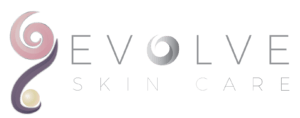Men have been enjoying benefits that mimic those of dermaplaning since ancient times due to their common practice of face shaving. Ancient Roman men scraped their skin on a regular basis using oil and a curved blade called a Strigil. In contrast, a straight razor shave most closely resembles the modern dermaplaning treatment. However, straight-razor wielding barbers are elusive in the 21st century, and women certainly are not scheduling appointments at barbershops, as there is a widespread misconception that any form of shaving facial hair causes it to grow back coarser and darker.However vellus hair on the face is actually safe to remove, as it is very different than terminal hair — the coarse hair that grows on the head, men’s beards, legs, underarms and private parts. Dermaplaning is not akin to shaving at home with a disposable razor. Rather, this highly controllable and effective method of exfoliation — performed by trained professionals in a spa setting — fully and safely exfoliates the body’s outer barriers.
Dermaplaning is a “controlled-trauma” treatment. The body reacts to this treatment by stimulating its interior emergency repair system (prompting increased circulation, more oxygen, additional nutrients and new cell stimulation) while allowing the trained professional to topically deliver antioxidants, peptides, growth factors, moisturizers and other vital nutrients to the fresh, newly exposed skin cells. The treatment stimulates normal shedding of the stratum corneum, removes skin flaws and helps reduce fine lines, wrinkles, milia and congested pores.
Dermaplaning allows for greater control of the depth of the exfoliation and the area being treated. A sterilized, surgical-grade dermaplane blade becomes an artist’s brush, transforming the client’s face into a smooth canvas ready for makeup or a youthful, dewy, glowing complexion so radiant it doesn’t need any makeup!
Unique exfoliation
Dermaplaning allows professional practitioners to target very specific and defined areas, and provides precise control of the exfoliating process, stroke by stroke. It is safe for all skin types and clients, even those with extremely sensitive skin or conditions such as rosacea, making it a great alternative for skin that is irritated by other methods of exfoliation. There is little to no pain and discomfort involved in treatment, and no recovery time necessary. Clients walk out the door after a dermaplaning treatment already fresh-faced!
Dermaplaning in the spa
Dermaplaning provides an immediate and profound non-invasive facial rejuvenation treatment for men and women. While all ages benefit from the treatment, dermaplaning is especially beneficial for clients over 30. It can be performed as a standalone treatment, but it is typically marketed as either an upgrade to a traditional facial or included as part of an advanced facial. Dermaplaning adds 20 to 30 minutes to a traditional facial service, plus an additional 15 minutes if the neck area is included.
A typical cost for a standalone dermaplaning service or add-on typically ranges from $60 to $120. An upgraded advanced facial that incorporates dermaplaning can cost as much as $300 to $400. This type of advanced facial should include all the steps of a traditional facial: cleansing, steaming, dermaplaning, extractions, mask, massage, moisturizer and sunscreen.
Some clients may request a chemical or enzyme peel after the dermaplaning. Advise them to consider this with caution, as irritation can occur if dermaplaning is combined with a peel. Either way, the results of dermaplaning are immediately visible, and can last three to five weeks with proper home care. The exact duration of results is determined by each client’s cellular renewal rate. Recommend that clients invest in a series of dermaplane treatments, combined with appropriate at-home products for lasting results.
Training
There is a wide variety of training options available for dermplaning, as current laws are still undefined regarding its regulations. It is ideal to seek out training from a state licensed esthetics school, preferably certified by a national body such as the NCEA or overseen by a medical physician.
Proper training encompasses how to appropriately assess and evaluate potential clients, including the following information: knowledge of contraindications to treatment, proper sanitation of instruments and infection protection, hair growth cycles and patterns, how to maneuver the instrument, clinical end points, troubleshooting and post-procedure options. A complete program involves practical training on live models to observe different skin types and textures, and how each skin type reacts to this treatment. Quality training is offered by many different entities and classes are available throughout the United States. Certification can usually be accomplished in six to 10 hours and costs anywhere from $190 to $800.
Follow Us On
Categories
